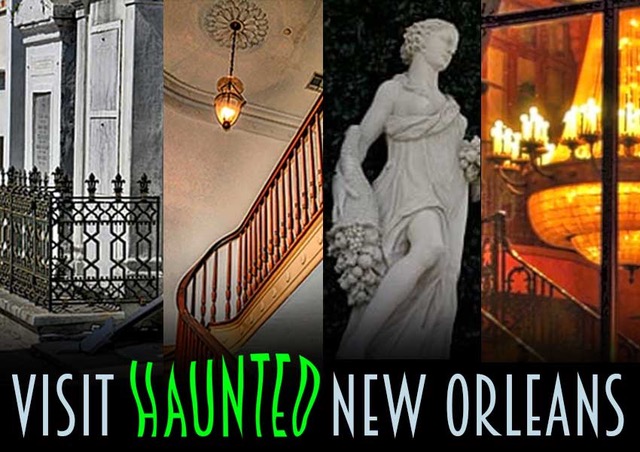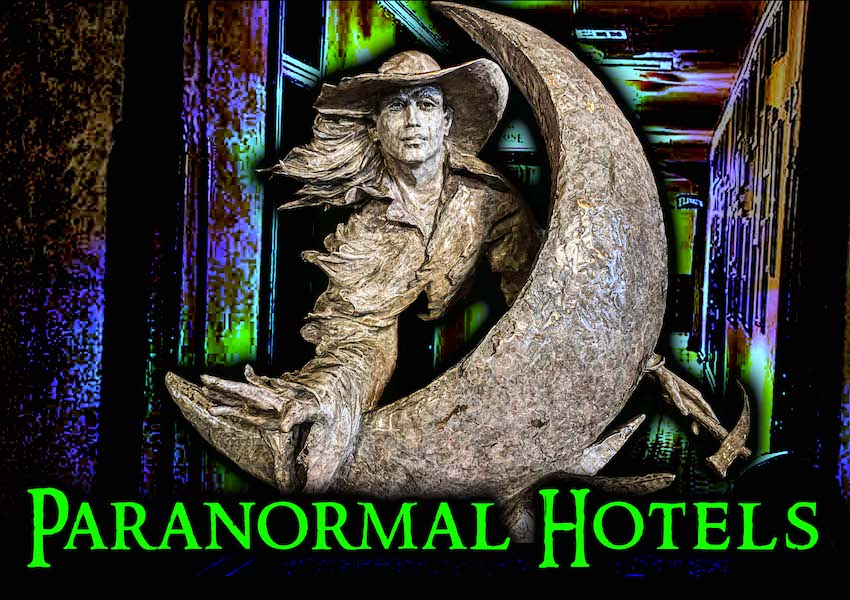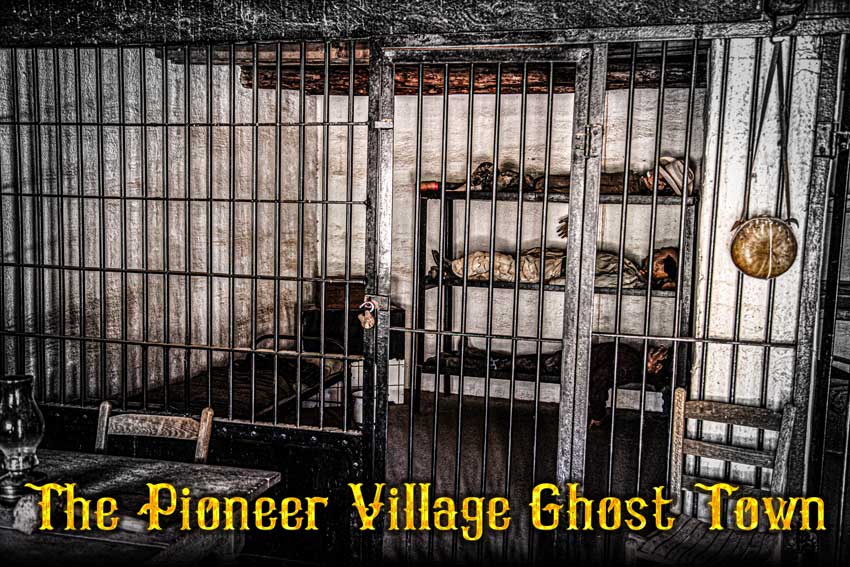Little Rock Arkansas
MacArthur Military Museum
This museum is still loved by eternal army-service
folks, providing a full paranormal sports package!
A victim who suffered a botched hanging is a playful presence.

DESCRIPTION
The MacArthur Museum of Arkansas Military History is one of central Arkansas’ oldest buildings. Built in 1840 with 3 foot thick walls, it is a large brick, mostly two-story rectangular structure with white a wooden porch that runs along both stories, supported with white columns. In the middle of the building, there is a three-story, octagon-shaped brick tower, that also connects inside with the floors. A large basement runs under the entire premises.
HISTORY
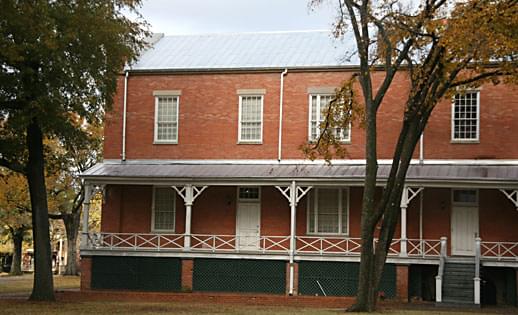 When Arkansas became a state, in 1836, it became necessary to build a military installation to guard the populace from angry Indian attacks. Soldiers and officers’ barracks, an armory and support structures, resulted in more than 30 buildings being constructed on this military post. In 1840, this well-built Arsenal was constructed to store munitions.
When Arkansas became a state, in 1836, it became necessary to build a military installation to guard the populace from angry Indian attacks. Soldiers and officers’ barracks, an armory and support structures, resulted in more than 30 buildings being constructed on this military post. In 1840, this well-built Arsenal was constructed to store munitions.
In May of 1861, Arkansas joined the Confederate states and fought for the South. Arkansas troops took over the post, after a peaceful negotiation, and compromise. Arkansas Confederate troops used the Arsenal Tower to repair their small arms and make gunpowder. On September 11, 1863, after a big battle with Union troops, led by General Frederick Steele, the city of Little Rock was re-taken, and Union soldiers moved once again into this military installation. The Arsenal Building was also used to hold a 17 year old Confederate martyr, David Dodd, who was caught in possession of plans, revealing Union troop positions and arms stashes in Little Rock.
After the Civil War, in 1873, the installation was renamed Little Rock Barracks, and the buildings were mostly used to house troops, until it was closed in 1890. As the arsenal storage was moved somewhere else, the Arsenal Building was transformed into housing for Officers and their families. Parties and social events were held in the the largest ground floor room on the east side of the building.
In 1880, Captain Arthur MacArthur was stationed here for 6 months, long enough for his son, Douglas, to be born here. Douglas MacArthur was destined to be General of the United States Army during WW 2 and most of the Korean War, before he was relieved of duty by President Truman.
In 1892, a land swap was agreed to between the Federal Government and the city of Little Rock. For 1000 acres north of Little Rock, the federal Government gave this 36 acre former military site back to the city, with the stipulation that the land would be “forever exclusively devoted to the uses and purposes of a public park.” A new military installation was built on these 1000 acres, Fort Roots.
All of the old barracks and support buildings were torn down, and the Arsenal Building was moth-balled, and left to slowly deteriorate for 50 years. Finally in 1930, money was found, and the building was rescued from its slow demise. It was renovated, made sound again, and became the home of the city’s Museum of Natural History and Antiquities, when it opened again in 1942.
In 1997, the historic building once again was in need of a major face-lift. After a “more comprehensive renovation effort”, the old Arsenal Building reopened in 2001, as the MacArthur Museum of Arkansas Military History. There are many interesting displays and historical artifacts from not only the fort years, but the military history of soldiers from Arkansas and their service in all the 20th century wars, and a few from current actions.

HISTORY OF MANIFESTATIONS
Like many other former military forts, the Old Arsenal Building and the land it sits on still seems to attract eternal career soldiers and the spirits of people tied to these places, who perhaps met their end there. Accidents, suicide, disease, battles, execution or death by other unknown causes, have taken the lives of military soldiers, personnel, and civilians alike.
Accidents: Munitions/cannonballs were known to blow up in arsenal storage facilities, killing soldiers.
Duel deaths: A duel between two soldiers took place in the basement, under the stair area, probably in the early years of the Arsenal Building.
Civil War Battle: While the change of sides from Union to Confederate in 1861 happened because of a peaceful compromise, in 1863, the battle for the city of Little Rock was a fierce fight, resulting in casualties. Soldiers lost their lives defending this installation, and the city of Little Rock, as did Union soldiers.
The story of Confederate patriot David Owen Dodd: Martyred after a botched execution. Torturous, brutal deaths often lead to hauntings.
 3 months after the Union forces had taken Little Rock, 17 year old Dodd was caught in a Union soldier check-point with sensitive military information about the Union forces, written in morse-code. Though offered a plea bargain if he revealed the names of those who gave him this information, David refused. In a military court, he was given a four day trial, convicted of spying for the Confederacy, and received a death sentence by hanging. On January 8th, 1864, gallows were in place just east of the Old Arsenal building, guarded by a large group of soldiers, to stop any possible rescue effort. 6,000 citizens came to watch. David was brought to the gallows in a large wagon, and made to step off the tail gate with the noose around his neck. Because of the incompetence of the living, he didn’t fall from a high enough stage or fast enough to snap his neck, because the tail gate was too low to the ground. David suffered a slow death by strangulation, to the horror of both the soldiers and the audience, despite an effort by a soldier to lift the rope up to try to speed up the execution. David was quickly and quietly buried at Mount Holly Cemetery. A memorial is dedicated to him, and a stained glass window was made in his honor, which now hangs in the museum.
3 months after the Union forces had taken Little Rock, 17 year old Dodd was caught in a Union soldier check-point with sensitive military information about the Union forces, written in morse-code. Though offered a plea bargain if he revealed the names of those who gave him this information, David refused. In a military court, he was given a four day trial, convicted of spying for the Confederacy, and received a death sentence by hanging. On January 8th, 1864, gallows were in place just east of the Old Arsenal building, guarded by a large group of soldiers, to stop any possible rescue effort. 6,000 citizens came to watch. David was brought to the gallows in a large wagon, and made to step off the tail gate with the noose around his neck. Because of the incompetence of the living, he didn’t fall from a high enough stage or fast enough to snap his neck, because the tail gate was too low to the ground. David suffered a slow death by strangulation, to the horror of both the soldiers and the audience, despite an effort by a soldier to lift the rope up to try to speed up the execution. David was quickly and quietly buried at Mount Holly Cemetery. A memorial is dedicated to him, and a stained glass window was made in his honor, which now hangs in the museum.
Articles of clothing, artifacts from various military events, historical eras, owned and used by the people who participated in these historical moments have been known to draw spirits to the building where these items are on display.
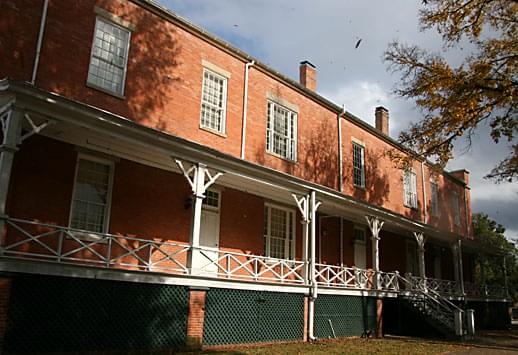
MANIFESTATIONS
As this was the only original building left standing, after the land swap with the Federal government, some entities now call this place home, or still like to visit on occasion, perhaps reliving the good times they had while living here. They perhaps also enjoy seeing what fellow soldiers accomplished after them. People have witnessed the full array of paranormal occurrences.
Auditory Activity
Disembodied voices, talking, and music have been heard by the living who work in the building and who visit the displays.
In 1996, an employee was sitting in her office in the basement, when she heard the sounds of music, laughter and talking coming from the room above her, which was the largest room on the east side of the ground floor. She went up to see, and saw and heard nothing. When she returned to her office, the same sounds were present.
Solid, Life-like Apparitions
The second floor of the tower was turned into a theater. While closing up for the night, an employee saw the solid body of a man, dressed in a dark uniform, lying across the chairs. She ran down to get another person to help what she thought was a transient to get out of the building. When the second person tried to touch the body, which had turned around, it melted into the air, probably encouraging a hasty retreat by both employees!
On occasion, see-through apparitions have been observed walking down the staircase to the ground floor, going about their business.
Playful Spirit of David
A playful entity, perhaps that of David, likes to throw things at people, just missing them, during late afternoon or stormy winter days. The unsuspecting person walks down the right hand staircase from the third floor to the second. If this person stops immediately and looks over their shoulder, he or she will see the shadow of an object fly by, as if an unseen presence at the top of the stairs is throwing something for chuckles, enjoying the reactions of people.
Shadow People
Shadow people and unexplained shadows on the wall have been noticed by many as well. Two shadow people have been seen in the area under the grand staircase in the basement, still reliving their duel.
STILL HAUNTED?
Yes Indeed!
The living are given the full paranormal treatment, from residual energy to solid apparitions, though pleasant in nature and not angry or resentful.
On April 25th, 2005, The Spirit Seekers Paranormal Investigation Research & Intervention Team made a visit to the MacArthur Museum and had some interesting experiences. Pictures taken indicate there are more spirits outside the museum than inside, though orbs were caught on camera inside as well.
Investigators came in contact with three spirit entities.
An investigator and a psychic met a friendly female presence, Katharine, who was the one who played the piano, making the piano music heard earlier on the second floor in the East Room. Another investigator met a male presence near the jeep display; (probably attached to the jeep or one of the other vehicles.)
The psychic made contact with yet another male spirit, who told the psychic that he didn’t normally hang out in this building, but wanted to come and see what the investigating team was doing there (probably feeling protective of the museum – perhaps an ex MP?).

LOCATION
503 East 9th Street
Little Rock, Arkansas 72202
The MacArthur Museum of Arkansas Military History, originally known as the Old Arsenal Building, can be found on the 36-acre park, off of E. 9th, between Commerce Street and McMath Avenue, just a block or so west of I-30 W.
SOURCES INCLUDE
- arkmilitaryheritage.com
Our Haunted Paranormal Stories are Written by Julie Carr
Our Photos are copyrighted by Tom Carr
Your Road Trip to Milwaukee’s Hot Spots












